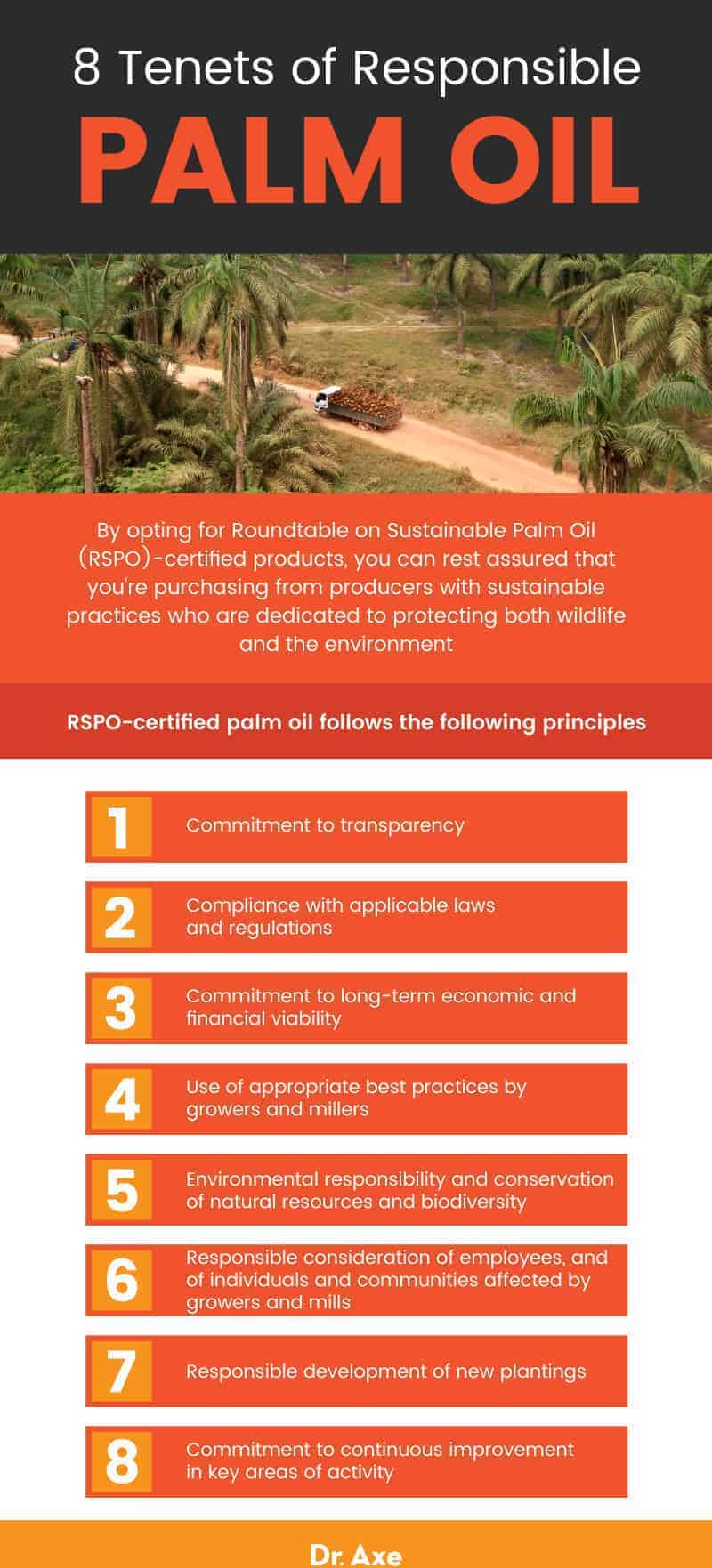This Dr. Axe content is medically reviewed or fact checked to ensure factually accurate information.
With strict editorial sourcing guidelines, we only link to academic research institutions, reputable media sites and, when research is available, medically peer-reviewed studies. Note that the numbers in parentheses (1, 2, etc.) are clickable links to these studies.
The information in our articles is NOT intended to replace a one-on-one relationship with a qualified health care professional and is not intended as medical advice.
This article is based on scientific evidence, written by experts and fact checked by our trained editorial staff. Note that the numbers in parentheses (1, 2, etc.) are clickable links to medically peer-reviewed studies.
Our team includes licensed nutritionists and dietitians, certified health education specialists, as well as certified strength and conditioning specialists, personal trainers and corrective exercise specialists. Our team aims to be not only thorough with its research, but also objective and unbiased.
The information in our articles is NOT intended to replace a one-on-one relationship with a qualified health care professional and is not intended as medical advice.
Red Palm Oil Benefits the Heart & Brain but Is It Bad for the Environment?
October 22, 2024

Red palm oil has garnered a good amount of both interest and controversy in recent years — much like coconut oil, but for different reasons. It has drawn attention for its potential effect on health, but it has also been the subject of intense debate regarding the effects that its production may have on the environment.
Palm oil has long been used throughout the food supply and in certain parts of the world for thousands of years, but only lately has it earned widespread recognition for its benefits on health. It has been associated with everything from reduced cholesterol levels to decreased oxidative stress and better brain health.
However, not all palm oil is created equally. Making a few savvy shopping choices can help ensure that you’re getting the highest-quality oil and purchasing from producers that prioritize sustainability and positive environmental practices.
So how is red palm oil made, and is palm oil healthy? Or do the side effects and environmental impacts of this product outweigh any potential benefits?
Keep on reading to find out.
What is red palm oil?
The palm oil definition encompasses any oil that comes from the fruit of oil palms. Elaeis guineensis, however, is a specific species native to Southwest Africa that is considered the primary source of palm oil.
These trees grow to be 20 meters tall and produce anywhere from 20–30 leaves per year. They also produce the palm fruit from which palm oil is extracted.
Palm oil comes from both the kernel and pulp of the fruit, and it’s estimated that every 100 kilograms of palm fruit yields about 23 kilograms of palm oil.
Because of its high yield, palm oil has become a common ingredient for cooking in many parts of the world. Malaysia and Indonesia, in particular, account for about 80 percent of the worldwide palm oil supply.
Additionally, due to its high smoke point and heat stability, red palm oil is a good choice for dishes that are fried or sautéed. It is also often found in many types of processed foods, like protein bars, baked goods and cereals.
Unrefined palm oil has a reddish hue and is often referred to as red palm oil. This type of oil is especially rich in beneficial carotenoids and antioxidants.
Not only that, but including a tablespoon or two of this healthy oil in your diet each day has been linked to a number of powerful health benefits.
It’s believed that we have been using palm oil for the past 5,000 yeas. In fact, in the 1800s, archaeologists unearthed palm oil in an Egyptian tomb dating all the way back to 3000 B.C.
Although originally used as a cooking oil, palm oil had a variety of medicinal uses in Africa as well. It was used as an antidote for poison, a cure for gonorrhea, a natural laxative, a diuretic, and a treatment for headaches and skin infections.
Malaysia and Indonesia account for the majority of worldwide palm oil production today. In fact, the Federal Land Development Authority (FELDA) is a Malaysian government agency and one of the biggest producers of palm oil.
In 1956, the Land Development Act was enacted, which sought to fight poverty. Settlers were given 10 acres of land from FELDA with oil palm or rubber and given 20 years to pay it off, resulting in an explosion in palm oil production.
These regions have faced the most deforestation and destruction due to palm oil. A 2016 review even noted that 45 percent of the land that is now used for palm oil production in Southeast Asia was actually forest back in 1990.
It wasn’t until 2004 that the Roundtable on Sustainable Palm Oil was formed, putting the emphasis on sustainability and responsible production that minimizes the impact on the environment, wildlife and the community.
Nutrition facts
Take a look at the red palm oil nutrition facts, and you’ll see that it’s primarily made up of fat and is composed of almost equal parts saturated and unsaturated fatty acids.
One tablespoon of palm oil (about 13.6 grams) contains approximately:
- Calories: 120
- Total Fat: 13.6 g
- Saturated Fat: 6.7 g
- Polyunsaturated Fat: 1.3 g
- Monounsaturated Fat: 5 g
- Vitamin E: 2.2 mg (15% DV*)
Red palm oil is also rich in carotenoids, which are the plant pigments responsible for its reddish-orange hue. Red palm oil is especially high in beta-carotene, a carotenoid that can be converted to vitamin A in the body.
*Daily Value: Percentages are based on a diet of 2,000 calories a day.
Benefits
1. May help reduce cholesterol levels in some
High cholesterol is one of the major risk factors for heart disease. Too much of this fatty substance can build up in the arteries, which causes them to harden and narrow, forcing your heart to work harder to pump blood throughout the body.
Some studies have found that red palm oil may actually help decrease the amount of bad LDL cholesterol in your blood to keep your heart healthy and strong.
One study published in the Journal of Nutrition looked at the effects of palm oil, soybean oil, peanut oil and lard on cholesterol levels. Researchers found that palm oil caused a 13.1 percent decrease in bad LDL cholesterol and a 6.7 percent drop in triglyceride levels in those with normal cholesterol.
Another 2016 study showed that palm oil had a similar effect on blood cholesterol levels as extra virgin olive oil and was able to lower both triglycerides and LDL cholesterol.
Other ways to lower cholesterol naturally and fast include eating more foods rich in omega-3 fatty acids, limiting your intake of sugar and refined carbs, and getting enough fiber in your diet.
2. Can help slow progression of heart disease
Besides lowering your cholesterol levels, palm oil has also been shown to help improve the health of your heart by slowing the progression of heart disease.
One study looked at the effects of palm oil on heart disease. After 18 months, 28 percent of people with heart disease who were treated with palm oil showed improvement while 64 percent remained stable.
Conversely, no one in the placebo group showed improvement, and 40 percent actually got worse.
A healthy diet and lifestyle are key to slowing the progression of heart disease. Besides including heart-healthy fats like red palm oil in your diet, getting enough exercise, eating plenty of anti-inflammatory foods and keeping your stress levels in check can also help reduce the risk of coronary heart disease.
3. Boosts brain health
Palm oil is jam-packed with tocotrienols, a form of vitamin E that has potent antioxidant properties and can support healthy brain function. This can have far-reaching benefits and may aid in everything from slowing dementia to enhancing cognition.
A study in 2011 composed of 121 people with brain lesions found that twice daily supplementation with tocotrienols helped block the growth of lesions.
Besides palm oil, other brain foods that can help boost memory and focus include blueberries, broccoli, leafy green vegetables and salmon.
4. Enhances vitamin A status
Red palm oil is an excellent source of beta-carotene, a type of carotenoid that is converted to vitamin A in the body. Vitamin A is an incredibly important nutrient that’s involved in many aspects of health, from maintaining healthy vision to promoting immune function.
In fact, vitamin A deficiency can cause symptoms like dry eyes, frequent infections and even blindness.
Palm oil is often used as a supplement to help improve vitamin A status in those who are at risk for deficiency.
A study out of India, for example, showed that treating pregnant women with red palm oil increased vitamin A levels for both them and their babies.
Another study examined the effects of red palm oil on 16 participants with cystic fibrosis, a condition that affects the secretory glands and causes difficulty absorbing fat-soluble vitamins like vitamin A. Supplementing with two to three tablespoons of palm oil per day for eight weeks was found to increase their vitamin A levels.
To help maintain healthy levels of vitamin A and prevent negative side effects, be sure to include a few servings of other vitamin A foods in your diet, such as carrots, sweet potatoes and kale.
5. May help lower oxidative stress
Free radicals are highly reactive compounds that form in your body as a result of factors like stress, a poor diet, or exposure to pollutants and pesticides. They can build up in your body over time, leading to oxidative stress, inflammation, cell damage and even chronic disease.
Antioxidants, on the other hand, are compounds that can neutralize harmful free radicals to prevent damage to your cells.
Red palm oil is high in beneficial antioxidants and has also been shown to reduce the inflammation and oxidative stress caused by free radicals.
A 2013 animal study in Malaysia evaluated the antioxidant activity of palm leaves extract (OPLE) in mice with diabetes. After just four weeks, OPLE was found to cause improvements in kidney dysfunction and fibrosis, two conditions commonly associated with diabetic neuropathy.
Not only that, but it was also found to decrease markers of oxidative stress and inflammation as well.
To really knock out oxidative stress, make sure you pair palm oil with a balanced diet as well as plenty of other high-antioxidant foods, such as turmeric, ginger, dark chocolate and pecans.
6. Can support skin and hair health
What you eat can make a big impact on the health of your skin and hair. In fact, many people swear by using red palm oil for skin and claim that it can do everything from improve the appearance of scars to fight off acne.
This is because it’s rich in vitamin E, a nutrient that plays a central role in skin health. In fact, the humectant glycerin used for the skin often is derived from palm oil.
One study published in the Journal of Research in Medical Sciences reported that taking vitamin E by mouth for four months significantly improved symptoms of atopic dermatitis compared to a placebo. Other research has suggested that vitamin E may be useful in the treatment of wounds, pressure ulcers and psoriasis.
Red palm oil for hair growth is also commonly used thanks to its rich tocotrienol content.
A study in 2010 comprising 37 participants with hair loss found that taking tocotrienol for eight months increased the number of hairs by 34.5 percent. Meanwhile, the placebo group actually saw a 0.1 percent decrease in the number of hairs by the end of the study.
Other top vitamin E foods that you may want to add to your diet include almonds, avocado, sunflower seeds, butternut squash and olive oil.

Risks, side effects and concerns
Although there are a wide array of health benefits associated with red palm oil, there are some side effects and ethical concerns that should be considered.
First of all, consuming red palm oil may affect people differently. While several studies have shown that palm oil can decrease cholesterol levels, others have produced conflicting results and report that it may actually increase cholesterol concentrations for some individuals.
For this reason, it’s best to use palm oil in moderation and use it in combination with other healthy fats in your diet.
For most people, the palm oil health risks are pretty minimal as it is unlikely to cause an allergic reaction or any negative side effects. Regardless, if you do experience any adverse symptoms after eating palm oil, discontinue use and talk to your doctor.
Keep in mind that some studies have found that reheated palm oil could increase arterial plaque, which may result in an increased risk of heart disease. For this reason, it’s best to avoid repeated reheating as it may decrease the oil’s antioxidant activity and lead to negative effects on health.
Additionally, while red palm oil is associated with many health benefits, it’s important to keep your intake in moderation. Too much of any type of fat can have negative consequences, such as weight gain and increased cholesterol levels.
Furthermore, much of the palm oil on the market today is heavily processed and oxidized for culinary purposes. This depletes the palm oil of its health-promoting properties and can have negative impacts on health.
Be sure to use unrefined and cold-pressed palm oil to sidestep any adverse health effects.
There are also some concerns over the environmental impacts of palm oil production. The growing market has placed a strain on countries like Malaysia and Indonesia, where a large amount of palm oil is produced.
Unfortunately, this has led to palm oil deforestation as forests and peatlands have been destroyed in order to keep up with the increased demands.
This has had devastating consequences, causing habitat loss for wildlife and increasing greenhouse gas emissions.
There have also been reports of human rights violations by the corporations that produce palm oil, with issues like unsafe working conditions and low wages drawing particular concern.
Should you use palm oil?
Red palm oil has a unique flavor and high smoke point, making it suitable for cooking many types of dishes. It also boasts a long list of potential health benefits, from relieving inflammation to improving heart health.
But with all the environmental and ethical concerns surrounding palm oil production, should you really add it to your kitchen pantry?
By becoming a well-informed consumer and making smarter decisions about which brands you buy, you can ensure that you’re gaining the health benefits of palm oil without the potential downsides.
The RSPO is an organization focused on improving sustainability and producing oil that is environmentally friendly. It has created a set of guidelines and standards that producers must adhere to in order to be RSPO-certified.
According to its website, these principles include:
- Commitment to transparency
- Compliance with applicable laws and regulations
- Commitment to long-term economic and financial viability
- Use of appropriate best practices by growers and millers
- Environmental responsibility and conservation of natural resources and biodiversity
- Responsible consideration of employees, and of individuals and communities affected by growers and mills
- Responsible development of new plantings
- Commitment to continuous improvement in key areas of activity
By opting for RSPO-certified products, you can rest assured that you’re purchasing from producers with sustainable practices who are dedicated to protecting both wildlife and the environment.
Check on the RSPO website for a list of certified producers before you head to the grocery store, and opt for brands that practice sustainability.
This nutrient-rich oil also has a very strong and distinct flavor that sets it apart from many other oils, like olive oil or grapeseed oil. The red palm oil taste is often described as carrot-like, and it also has a rich texture that makes it a good fit for many dishes.

Final thoughts
- Palm oil is made from the fruit of the oil palms. Red palm oil is unfiltered and high in carotenoids, which are pigments that give it a characteristic reddish hue.
- Benefits of palm oil include potentially decreasing cholesterol levels, reducing oxidative stress, boosting brain health, slowing the progression of heart disease, increasing vitamin A status, and improving skin and hair health.
- Unfortunately, the growing demand for palm oil has been linked to deforestation, loss of wildlife diversity and unethical treatment of workers.
- Opting for brands that are RSPO-certified can ensure that you are buying from producers that prioritize sustainability practices.













